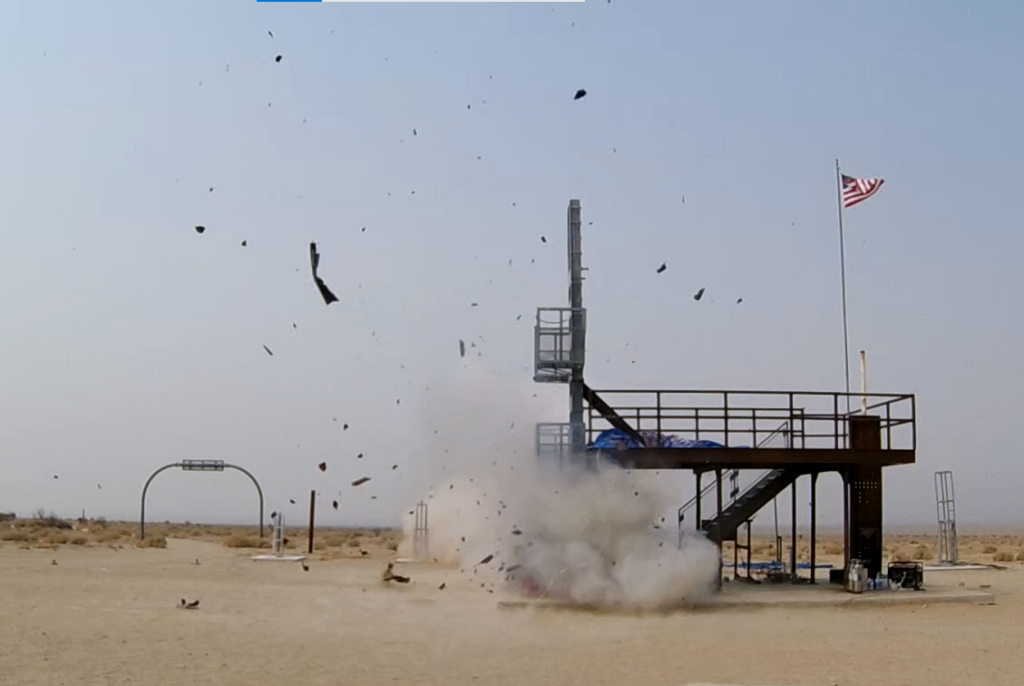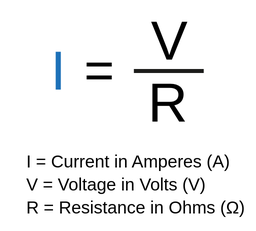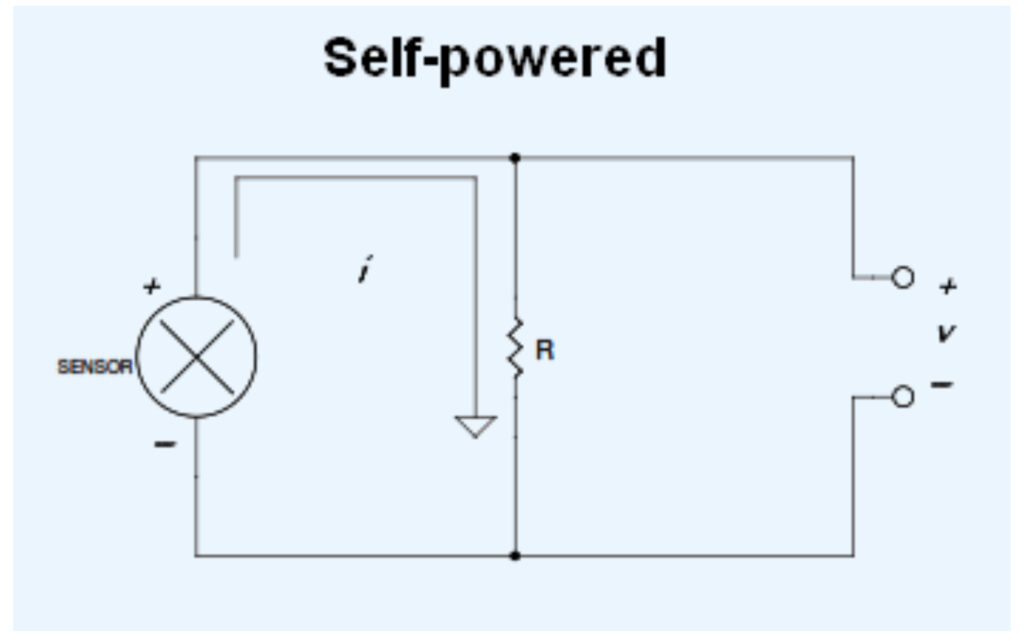by Bill Claybaugh and Dave Nordling, RRS
This firing report will be the first in a series of three articles posted on RRS.ORG. This report will cover the launch event and preparations over many days made by RRS member, Bill Claybaugh. As the attending pyrotechnic operator for this firing event, I have summarized this work for the benefit of our readers with the permission and oversight of Bill.
Bill Claybaugh has been planning to build, load and launch a large 6-inch solid motor for many months and the first attempt had finally come to pass at the RRS Mojave Test Area (MTA) over the span of almost a week starting Tuesday, October 12 and culminating in a launch on Saturday, October 16, 2021. He had studied this project very carefully and built a great many new parts and tools from his home in Colorado. The scope of this project is quite extensive and the larger goal was to enable larger solid motor building by other members of the RRS at the MTA. The 6-inch motor was just the first in what will hopefully be a growing series of similar and larger scale solid motors.

The predicted performance of this 6-inch single grain motor was 1350 lbf of thrust for a duration of 8.35 seconds which was expected to exceed 70,000 feet; well above the RRS MTA’s standard 50,000 foot altitude waiver. This “P” sized solid motor in this vehicle required an FAA Certificate of Authorization (COA) for this flight on the prescribed dates during daylight hours. The submission of Monte Carlo simulations of the trajectory (splash analysis) were graciously performed by Chuck Rogers (author of the RASAero II software) and a necessary part of the process to verify no significant concerns for impacting nearby populated areas or structures. Also, the FAA Class 3 rocket waiver that was granted would require the launch team to contact the relevant air traffic control 15 minutes in advance of the intended launch for final permission to proceed. A separate article discussing this subject in more detail will be coming soon.
The rocket had two streamers for a recovery system which were intended to be sufficient for easier spotting of the rocket in descent rather than provide a soft landing.
Many members of the society participated in this project over the several days needed to prepare and conduct the mixing, pouring and casting process. RRS members Dave Crisalli and George Garboden lended their time and expertise in solid motor building which led to a stellar finished product on Thursday. Several of Bill’s family and friends attended and supported the preparations for launch.





Given the size of the 6-inch rocket, Bill designed and built a T-slot type of launch rail with a 24-foot length on an aluminum truss structure. The system was designed to be deployed in a green-field site and easily assembled by a small team of people. There were some challenges in getting the design to work but through the combined efforts of those at the site during the afternoon and early evening on Friday, the erecting and loading process was safely completed. Susan and Ed Wranoski both had a lot of great suggestions about getting the right placement of the come-alongs to bring the launcher up to a sufficient angle to secure it by the chains and strap anchors around the pad.
The new launch rail system will be the subject of a separate article coming later on RRS.ORG. Design improvements and substantial changes are being planned such that the next launch event will have an easier time in raising and lowering this important asset for the launching of larger rockets from the MTA.


During the first launch operations of the rocket, the wireless telemetry wasn’t receiving signals. After restarting the computer and replacing the nosecone, the pyrotechnic charges in the recovery system accidentally fired due to a short. The payload system was removed, inspected and replacement pyrotechnic charges installed. After protecting the terminals from a similar short during final installation of the payload and nosecone, the telemetry system was working and the launch could proceed.


The launch event coincided with the launch operations of our neighbors’ (FAR). We were in constant communication to assure everyone was under cover at the proper times. The weiather was nearly ideal with very low winds the whole day. After road and air checks were completed, we prepared for launch.



The initial launch was swift and powerful as the motor ignited and came to full thrust leaving the launch rail. The rocket canted to the northeast opposite the intended direction of the launch rail and the vehicle appeared to corkscrew as the motor burned to its full duration before going out of sight. The recovery system appears to have fired early as one of the streamers and the entire payload module fell back to the northern side of the MTA. The spent rocket motor casing has not yet been recovered. Bill was able to bring back the payload segment for inspection at the MTA while others continued the search for the rocket.




Based on review of video footage, it appears the sudden turn uprange occurred at around 100 feet and took less than 1/4 second. The current thinking is that the separation system depressurized, producing the side-thrust that caused the sharp turn after leaving the rail. It is assumed the telemetry loss of signal (LOS) was a result of the antenna snapping off during this sudden turn. LOS occurred at 119 feet and 425 ft/sec. About 0.25 seconds later, the payload can be seen starting to fall away from the rocket which can only occur if the system is depressurized. The payload was recovered about 300 feet from the launch tower and on the ‘new’ azimuth.
After the initiators fire–and both were fired–it would be expected that applying pressure to the quick-disconnect (QD) fitting would:
(1.) NOT result in the four retention pins extending, and,
(2.) would cause venting through the diffusers.
That is, the burst disk is supposed to be punctured due to the piston driving the hammer through it when the initiators fired and any gas generated in the system is vented past the burst disk and through the diffusers.
The recovered flight hardware instead extended all four pins, did not vent through the diffuser, and did vent through the outlet reserved for the hot initiator gases. This means that the burst disk was not opened and pressurizing gas was somehow leaking into the hot gas circuit. The image below of the burst disk shows its condition as found upon opening.

Further disassembly showed that the O-ring seal separating the hot and cold gas circuits around the hammer that penetrates the burst disk appeared damaged from heat. That seal damage was allowing the cold gas to escape into the hot gas circuit and then vent. Further, the O-ring prevented hot gas from getting to the subject O-ring around the piston that drives the hammer through the burst disk was in two pieces and showed clear evidence for melting at the edges. Thus, when the dual-redundant initiators fired, the piston O-ring failed (or had previously failed, although it was undamaged when installed) which allowed hot gas to leak past the piston (which nonetheless hit the burst disk hard enough to dent it but not tear it) and to damage the O-ring separating the hot-gas and cold-gas circuits in the valve. These two damaged O-rings then allowed cold gas to vent via the hot gas circuit, resulting in the payload seperating from the rocket.
Naturally, none of these failures ever occured in previous ground testing.
Wind shear was considered as a cause for the sudden change in vehicle direction witnessed during launch right after clearing the rail. Even in calm wind conditions on the ground, there have been past launch events at the MTA which have had sharp unseen discontinuities in the wind profile causing serious perturbation of the flight path in a rocket flight. This potential cause can not be fully excluded, but it is thought to be unlikely..
The venting of the hot and cold gas _may_ have caused the sudden pitch over as seen in video footage. As of now, this is being carried as a working hypothesis. However, none of this explains why the initiators apparently fired a few fractions of a second after lift-off.
The telemetry data will soon be downloaded from the ground station to see if there was any indication of the beginning of this sequence of events. Because the ground station showed loss of signal (LOS) at 119 feet, and that LOS appears to have been the result of the antenna snapping off in the course of the sudden pitch change. There might not be any recorded data of the relevant accelerations or rates from the ground station.
This report will be updated as new information becomes available.


In conclusion of that day’s launch event, with the recovered parts from the rocket payload examined and packed for shipment back to Bill’s home, the remaining team worked to carefully lower the launch rail back to horizontal using the reversed process used to successfully and safely raise it. The launch rail support legs were left at the MTA as Bill and Mike Pohlmiller were going to consider a new design approach using the same T-slot backbone. Although there was no evidence of the rocket hanging up on any discontinuity, some repairs of the interconnections between the three segments should allow the combined rail path to be more straight.

The RRS is grateful to the many members and participants we had over those several few days. It was a big success despite some significant challenges and disappointment in the results. The project was designed to be a pathfinder to subsequent large solid motor projects and we expect the next motor build and improved payload system design in the new calendar year, 2022.












